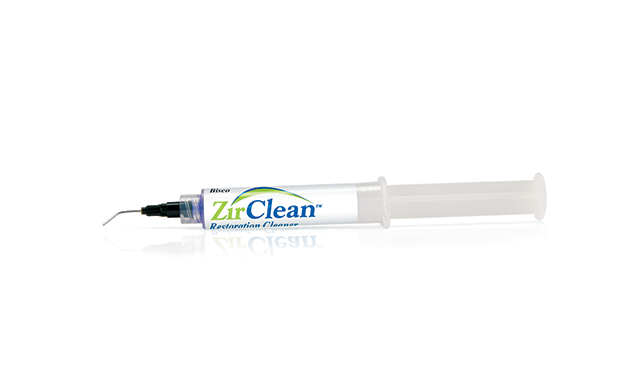Creating a strong bond with ZirClean
How proper surface preparation can lead to optimal zirconia outcomes.

Zirconia is a popular restorative material and dentists are using it more often. That’s because it’s a very strong material and its esthetics continue to improve, making the material even more prevalent. Unfortunately, zirconia presents a challenge for clinicians. After initial try-in, the surface becomes contaminated, and if not appropriately cleaned, it can lead to a poor bond or even restoration failure.
To address that issue, manufacturers have developed cleaning products geared toward zirconia’s specific demands. BISCO Dental Products’ zirconia cleaning agent is called ZirClean™, and it offers clinicians cleaning properties as well as exceptional handling and ease of use.
“The only surface that becomes contaminated by saliva during the try-in process is zirconia,” says Dr. Rolando Nuñez, DDS, clinical affairs manager, BISCO Dental Products. “Other surfaces just get dirty, but they don’t become contaminated - only zirconia does that - so ZirClean will remove the contamination that cannot be removed without specialized cleaners, and then it will allow the dentist to achieve optimum bonding to that surface.”
Related reading: Achieving faster posterior restorations with REVEAL HD Bulk
Decontamination
A specialized cleaning agent is only necessary because of zirconia’s unique material properties.
“When the dentist receives a zirconia restoration, he’s going to try it in the mouth to check on occlusion, check on fitting,” Dr. Nuñez explains. “And then the surface will immediately become too contaminated because the phosphate lipids and saliva react with the zirconia surface. You’re going to have a depletion of the bonding sites.
“So the bonding mechanism will not be available,” he adds. “You don’t have any sites to allow bonding. Even if you have the proper primers and the proper cement, you won’t be able to bond to the surface, and that can lead to clinical failure - but only with zirconia. ... With zirconia, it is a must to use this material after try-in to make sure that you achieve proper bonding.”
Because of zirconia’s popularity, BISCO saw the need to create a specialized product.
“The reason why we developed this product is because zirconia has become a very hot restorative material,” Dr. Nuñez says. “It works well in the mouth. It has great indications, and now it’s become more esthetic than it was before, so the array of possible treatments are just massive. So if you have more people using the material, you have to make sure that you fill that gap where contamination is the main issue.”
Mechanism of operation

Previously clinicians didn’t have a specific agent just for decontaminating zirconia restorations. There were, of course, accepted methods, but none was perfect.
“Even though zirconia has got a good decade in the market, we’re still learning about it,” Dr. Nuñez says. “People were cleaning it with different things and it was not working properly. They were using water, then they were using some sort of acid. Then they were using sodium hydrochloride, then they were using stuff like sandblasting, which is mechanical cleaning.”
ZirClean goes beyond those decontamination methods, giving zirconia restorations the clean surface necessary for effective bonding.
“When it reacts with the surface, it does it via an alkaline pH,” Dr. Nuñez explains. “So the product is really a basic alkaline and it will react with that surface. That will remove that contaminated surface, exposing new bonding sites to do proper bonding. We have done all the testing; we did all the homework. It takes the zirconia surface back to where it’s supposed to be in order to achieve the bond.
Trending article: The top 5 product test drives of 2018
“When [the surface is] contaminated, the bonding sites are depleted, and your bond strength is going to be very low,” he adds. “When you apply ZirClean, you have a pristine surface, and then you can achieve the proper bonding results.”
Improved capabilities
ZirClean isn’t the first product to address zirconia’s decontamination needs; however, BISCO sought to improve on what it saw lacking in other products, specifically handling and ease of use.
“Another product comes in a bottle, you have to put it in a mixing well, and then you need to use some sort of applicator to paint the surface and clean it,” Dr. Nuñez says. “We made it easier. We put it in a gel phase and put it in a syringe. Now all the doctor has to do is just squirt it onto the surface. It’s easier to apply. You don’t need to put it in a mixing well and use an applicator. You save a little bit of time, but I don’t think time is the issue. The problem is the convenience. With the syringe, you just put it on the zirconia surface, wait 20 seconds, rinse it away and you’re done. It’s a very, very easy material to use."
